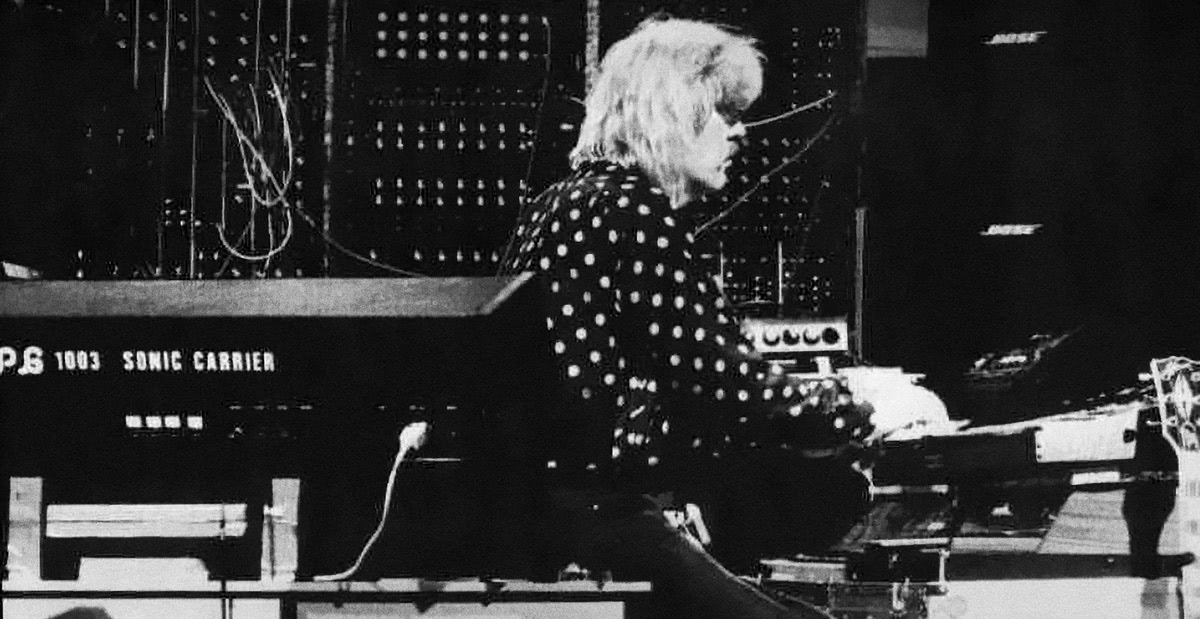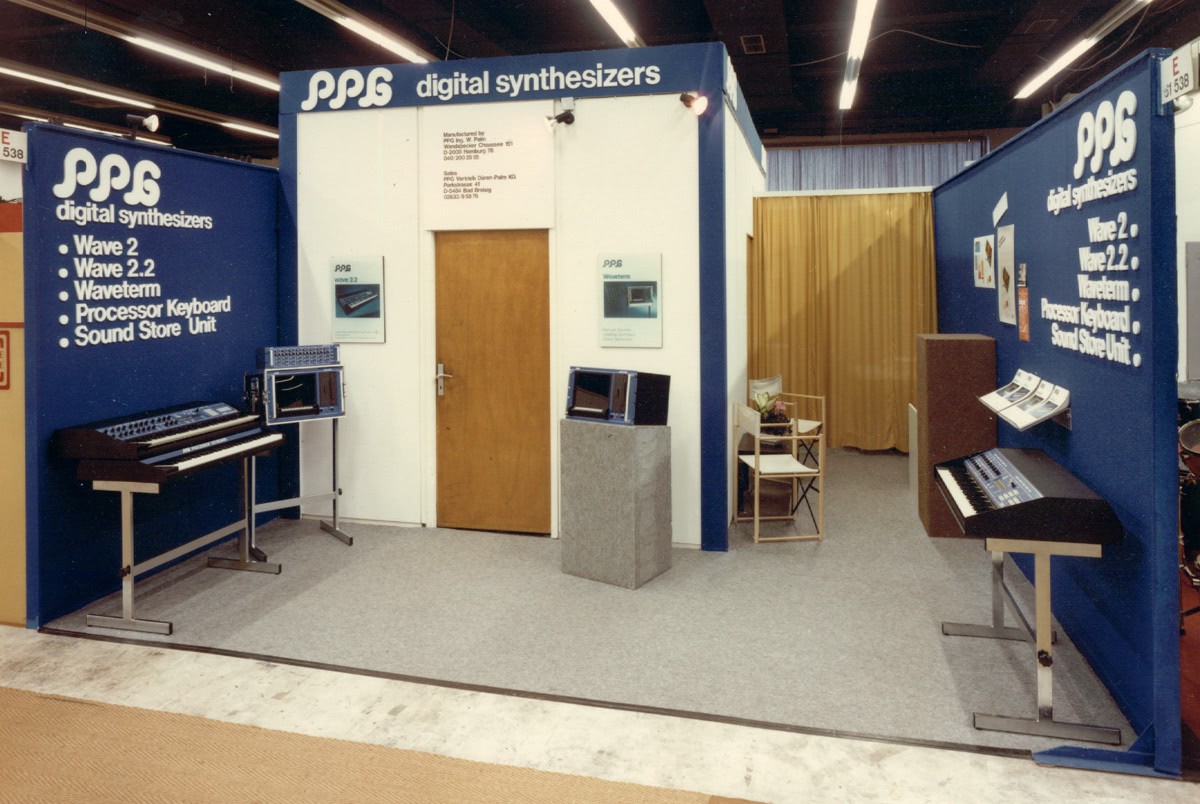Known as the father of wavetable synthesis, Wolfgang Palm is the founder of PPG Synthesizers. PPG Synths have graced the stages of artists like David Bowie, Jean Michel Jarre, Depeche Mode, Gary Numan, Stevie Nicks, Pet Shop Boys, Mike and the Mechanics, and Stevie Wonder.
It is a great honor for us to be joining forces with the legend, and to break boundaries in the world of virtual instruments.
Wolfgang visited Brainworx Audio in Leverkusen, Germany, where we managed to sit down and do a quick interview with him to find out about this exciting new collaboration and the history of this incredible synth maker.

Wolfgang Palm ca. 1975
Creating synthesizers most probably wasn't your dream as a kid? How did the fascination with synthesizers start that lead you to design some of the world's most innovative synths?
When I was a kid, there were no synthesizers, mobile phones, and computers. When I was ten, transistor radios were the hit—small ones, which you could hold in your hand and walk around with. My biggest wish was to have one. It was around that time that I started getting into electronics.
There were two shops in Hamburg which sold electronic parts. So you could go there and buy all the single parts you need to build electronic circuits. I had a little book with circuit diagrams for simple things like amplifiers, oscillators, or how to make an LED blink. If you had soldered the components together correctly, it worked. If you did something wrong, a transistor could break.
Later on, when I got into music and played in a band, my Dad bought me a Farfisa organ. That was a big step, but the Farfisa didn't sound like the sounds from my favorite bands. Hammond organs produced that sound. So I tried to figure out what made that great sound. I had a bandmate who worked in a music shop so that I could check out the Hammond myself.
It was clear to me that the basis of that sound was sine waves. My Farfisa had some sawtooth waveforms. So I designed a lowpass filter circuit, which made the sound more sine-like. I had to attach a filter to each of the organs oscillators, which was about 70 times. Anyway, I managed to do that, and the organ sounded much better.
Then in the late 60s, when I was studying physics, the Moog synthesizer came out, and I was fascinated by the music from ELP. I wanted to use sounds like that in my band.
I asked myself what kind of musical instrument this could be and how such an instrument could function. Particularly the Portamento Effect with the fact that it was an Oscillator that doesn't have a fixed pitch (like with an organ) but is freely controllable.
So I built a very basic VCO, as I had in my mind, and to control it from the organ, I developed a Pitch-to-Voltage converter which generated a control voltage from the sounds of the organ and triggered the VCO.

Wolfgang Palm ca. 1975
You've come a long way since "Der Kleine" (The Little One) synthesizer. Do you still have fond memories of that synthesizer?
Well, that was the first compact synthesizer I built. I only sold three. The unique thing about this was that I used the oscillators, which I had in my modules already.
They had a linear voltage control, where you have a volt/frequency dependency, as opposed to volt/octave like the Moog.
The linear system is much easier to implement and is less prone to temperature changes.

Under the Eiffel Tower: Tangerine Dream in Paris, November 1972
Many used to say that PPG synthesizers defined one of the most prominent electronic groups of our time, namely "Tangerine Dream". How close was the relationship between yourself and musicians when experimenting and coming up with new concepts?
I met Christoph Franke in the mid-70s. He told me about his ideas and his music. I was fascinated, and we discussed it for many hours. I built some modules for him, and he showed my synths to Edgar Froese, who bought my "Compact Synthesizer" a follow up of "Der Kleine."
Later I met Peter Baumann, who was especially interested in keyboards with more than one mod-wheel so that he could control up to eight different modulations directly from the keyboard during live performances. They invested a lot of money on their instruments, especially Peter.
Chris had contact with the University of Erlangen, which we're experimenting with microprocessors very early on. Chris told me about that, and sometime later, when a component sales representative demonstrated the first microprocessor evaluation kit to me, I knew that this would be a gamechanger for electronic music instruments.

Edgar Froese (Tangerine Dream)
In recent years PPG developed a series of software instruments based on advanced wavetable synthesis. Where do you see room for further development regarding wavetable synthesis?
I developed wavetable synthesis in the late 70s, with the available hardware at that time, which was very limited. With today's computers, this can be done without any additional hardware, and CPUs are so powerful that we can synthesize a lot of voices and extend functionality. But Wavetable synthesis has some basic limitations.
The fact is that fixed periods are used as a sound source, which always leads to strictly harmonic sounds. In nature, most sounds include nonharmonic components as well, which results in sounds where each period differs slightly from another.
To synthesize those sounds, it is necessary to control the single sine components individually. I created such a system over the years, which led to the "PPG Infinite" synthesizer. And even more important is the fact that all kinds of sounds can be morphed together in various ways.
The big challenge here is to analyze these sounds and to detect all the essential sine waves.

PPG stand at Frankfurt Musikmesse 1982
As a musical instrument designer, what intrigues you these days in terms of new devices, trends, and where the design of new electronic instruments is going?
To be honest, not much. Maybe this is because there aren't new sound possibilities made in recent years. It seems that most people are satisfied with samples and typical Moog sounds (the fatter - the better). The highlight of 99% of the synth demos I see is when the operator tweaks the cutoff dial.
In the 90's I found "physical modeling" quite interesting. And I'm a fan of "sound morphing".
I found the ROLI technology impressive when Jordan Rudess demoed it.
A perfect system, in my opinion, would be able to reproduce all-natural sounds (like a sampler) but with the possibility to change the sounds as much as possible.

Dirk Ulrich & Wolfgang Palm (Brainworx Audio, Germany, 2020)
Can you tell us about your collaboration with Plugin Alliance & Brainworx Audio?
Well, I am thrilled that I found Brainworx Audio & Plugin Alliance, who appreciate my work from the past and would like to continue my current software products.
I think they have a great team of competent developers, product specialists, marketing, and all that belongs to a successful company.
I support their work and to make the transition as smooth as possible. It will be exciting to see how this evolves.
Also, I think that this collaboration will find a much wider audience than before.
For more on Wolfgang Palm & PPG visit: